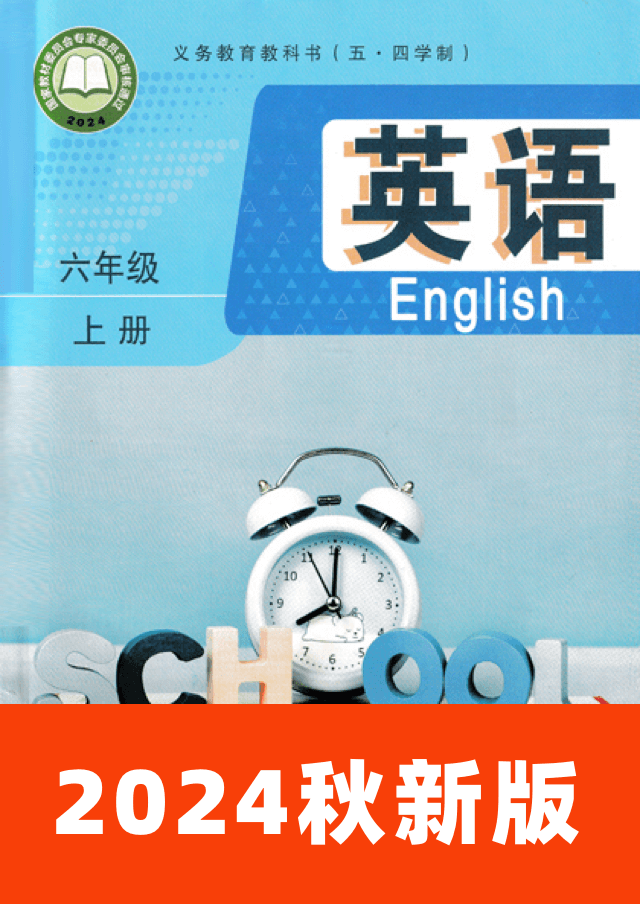Grammar课文句子跟读音频
Grammar
语法
一、词类(Parts of Speech)
表1 词类
词类
英语名称
意义
例词
名词
Noun (n.)
表示人或事物的名称
son, tennis, family, idea
儿子、网球、家庭、想法
冠词
Article (art.)
用于名词前,帮助限定名词所指的人或事物
a, an, the
代词
Pronoun (pron.)
用于代替名词以及起名词作用的短语、分句或句子等
we, her, that, what
我们、她的、那个、什么
形容词
Adjective (adj.)
用于修饰名词,表示人或事物的特征
funny, different, excited, amazing
有趣的、不同的、兴奋的、惊奇的
数词
Numeral (num.)
表示数量或顺序
nine, thirteen, first, twentieth
9、13,第一、第二十
动词
Verb (v.)
表示动作或状态
be (am, is, are), play, think, have
be动词(am, is, are)、玩、想、有
副词
Adverb (adv.)
用于修饰动词、形容词或其他副词
not, too, there, usually
不是、也、那儿、通常
介词
Preposition (prep.)
表示名词、代词等与句中其他词的关系
in, on, at, of
在……里、在……上面、在……、……的
连词
Conjunction (conj.)
用于连接单词、短语或句子
and, but, because, when
并且、但是、因为、当时
感叹词
Interjection (interj.)
表示说话时的喜悦、惊讶等情感
well, hello, oh, hey
好的、你好、哦、嘿
二、名词(Nouns)
名词是指人或事物的名称。
1.名词的种类
名词可分为专有名词和普通名词两类。专有名词是特定的人、事件、机构、地点等专有的名称,如Peter、January、Singapore。专有名词的第一个字母要大写。
2.名词的可数性
名词按其可数性可分为可数名词和不可数名词。可数名词有复数形式,如eight rabbits、some trees。不可数名词一般没有复数形式,如milk、bread、yogurt。
3.名词所有格
名词所有格表示所属关系,其构成情况如下表所示。
表2 名词所有格的构成
类别
构成方法
例词
读音
单数名词
加's
Mike's /maɪks/ baseball your group's /gru:ps/ ideas your mum's /mʌmz/ birthday his uncle's /ˈʌnk(ə)lz/ farm Lily's /ˈlɪliz/ family Kate's /keɪts/ cat her dad's /dædz/ glasses Alice's /ˈælɪsɪz/ vlog the actress's /ˈæktrəsɪz/ name George's /ˈdʒɔ:dʒɪz/ father
迈克的棒球 你们小组的想法 你妈妈的生日 他叔叔的农场 莉莉的家庭 凯特的猫 她爸爸的眼镜 爱丽丝的播客 女演员的名字 乔治的爸爸
复数名词
不以字母-s结尾
加's
Children's /ˈtʃɪldrənz/ Day
儿童节
在清辅音后读/s/,在浊辅音和元音后读/z/,在/s/、/z/、/∫/、/tʃ/、/dʒ/等后读/ɪz/
以字母-s结尾
加'
her grandparents' /ˈgrænpeərənts/ favourite grandchild
她的祖父母最喜欢的孙女
读音不变
三、冠词(Articles)
冠词是置于名词之前,限定名词所表示的人或事物的一种虚词。冠词不能离开名词单独使用。冠词分为定冠词(the)、不定冠词(a / an)和零冠词。
1.定冠词
定冠词的基本概念是“特指”,用于指说话人和听话人已知的人或事物,可与单数可数名词、复数可数名词或不可数名词一起使用。例如:“Where is the library?”“The glasses are on her dad's nose.”“The milk is on the table.”。定冠词在辅音前读/ðə/,在元音前读/ði/;特别强调时可读作/ði:/。
2.不定冠词
不定冠词的基本概念是“非特指”,用于指某类人或物中的任何一个或某一个。其中an放在以元音(音素)开头的名词前面,如an eraser。不定冠词只能与单数可数名词一起使用,其基本含义有“该类中的一例”“只有一个”“每一个”等。例如:“I have a pet dog.”“Sometimes I play basketball for an hour.”“We have three lessons a day.”。
不定冠词的基本概念是“非特指”,用于指某类人或物中的任何一个或某一个。其中an放在以元音(音素)开头的名词前面,如an eraser。不定冠词只能与单数可数名词一起使用,其基本含义有“该类中的一例”“只有一个”“每一个”等。例如:“I have a pet dog.”“Sometimes I play basketball for an hour.”“We have three lessons a day.”。
3.零冠词
零冠词指名词前不加冠词的情况。例如:“My favourite subject is English.”“Binbin is good with numbers.”“It's time for me to go to bed.”。有的语法书并不把零冠词列为冠词中的一种。
四、代词(Pronouns)
代词是代替名词以及起名词作用的短语、分句或句子的词,它们的词义必须通过上下文来确定。此处重点介绍人称代词、形容词性物主代词和指示代词。
1.人称代词
人称代词表示人称范畴及其屈折变化形式,有人称、数、格等变化。
表3 人称代词
人称
单数
主格
宾格
复数
主格
宾格
第一人称
I
我
me
我
we
我们
us
我们
第二人称
you
你
you
你
you
你们
you
你们
第三人称
he
他
him
他
she
她
her
她
it
它
it
它
they
他们/她们/它们
them
他们/她们/它们
2.形容词性物主代词
物主代词是表示所有关系的代词,分为形容词性物主代词和名词性物主代词,此处重点介绍形容词性物主代词,它们相当于形容词,置于名词之前作定语,如my name、your schoolbag、her favourite subject、their children。
表4 形容词性物主代词
人称
单数
复数
第一人称
my
我的
our
我们的
第二人称
your
你的
your
你们的
第三人称
his
他的
her
她的
their
他们的/她们的/它们的
its
它的
3.指示代词
指示代词是专门用来指出或标示人或物的一类代词,常见指示代词有this、these、that、those等。
表5 指示代词
指示代词
用法
例句
this
这个
these
这些
用于指时间或空间上较近的事物
This is my uncle's farm. These are my friends at the drama club.
这是我叔叔的农场。 这是我戏剧社的朋友们。
that
那个
those
那些
用于指时间或空间上较远的事物
Do you see that red house by the river? Those ping-pong bats in the corner are my grandpa's.
你看到河边的红房子了吗? 角落里的乒乓球拍是我爷爷的。
五、 动词(Verbs)
动词表示动作或状态。动词的人称和数一般必须与主语的人称和数一致。动词是词类中最复杂的一种,不同语法书的动词分类有所不同。此处简要介绍系动词(linking verb)、实义动词(full verb)、助动词(auxiliary verb)和情态动词(modal verb)。
1.系动词 系动词是连接主语和表语的动词,不能独立作谓语,必须与其后的表语一起构成谓语。常见的系动词有be(am、is、are)、look、get、turn等。例如: I am 12 years old. Maths is very useful in our life. They are carrot plants. You look happy today. The day gets longer in summer. Trees turn green in spring.
2.实义动词 实义动词意义完全,能独立作谓语。例如: I play tennis with my friends after school. My father likes fishing a lot. What time do you usually get up?
3.助动词 助动词本身无词汇意义或意义不完全,不能独立作谓语,它们只能和实义动词一起构成各种时态、语态、语气,以及否定和疑问结构。常见的助动词有be、do、have、will等。例如: Do you want to be my friend? I don't have a brother. Where does Peter spend most of his time at school?
3.助动词 助动词本身无词汇意义或意义不完全,不能独立作谓语,它们只能和实义动词一起构成各种时态、语态、语气,以及否定和疑问结构。常见的助动词有be、do、have、will等。例如: Do you want to be my friend? I don't have a brother. Where does Peter spend most of his time at school?
4.情态动词 情态动词表示说话人的语气和情态,不能独立作谓语,只能和主要动词一起构成谓语。常见的情态动词有can、may、could、must、have to、should、would等,其后动词使用原形。情态动词一般没有人称和数的变化,它的否定式一般是在其后加not构成,在一般疑问句中通常将其提到句首。例如: She can speak a little French. He can't swim. Can you come to my party? May I have your name?
本册主要学习情态动词can表示“能力”的用法。该情态动词在不同句式中的用法如下表所示。
表6 情态动词can的肯定式、否定式、疑问式和回答
句式
例句
肯定式
Linda can swim really well. Cats can climb trees.
琳达游得很好。 猫会爬树。
否定式
I can't (cannot) cook. My parents can't (cannot) speak English.
我不会做饭。 我的父母不会说英语。
疑问式和回答
Can you play ping-pong?
你会打乒乓球吗?
Yes, I can. / No, I can't.
会,我会。/ 不,我不会。
What instruments can Teng Fei play?
腾飞会玩什么乐器?
He can play the drums.
他会打鼓。
六、介词(Prepositions)
介词一般用于名词或代词前,表示该词与句中其他成分的关系。介词后面的名词或代词称为介词宾语。介词宾语若是人称代词,则要用宾格。介词和介词宾语合在一起构成介词短语。
1.表示时间的介词
表示时间的介词主要有at、on和in,它们的用法多样。
表7 表示时间的介词at、on和in
at
钟点 at 3 o'clock 用餐 at lunchtime 节日 at Christmas 年龄 at the age of 20 时间 at the same time 一天中的某段时间 at night
on
日期 on 22nd November 星期几 on Thursday 节假日 on New Year's Day 某一天的某段时间 on Sunday mornings
in
月份 in April 季节 in spring 年份 in 1949 一天中的某段时间 in the afternoon
其他表示时间的介词还有before、after等,例如:before breakfast、after school。
2.表示地点的介词
表示地点的介词很多,其中最常用、最灵活的是at、in和on。 (1)at表示在某个地点,例如: at school at the music studio at home at his house at the bus stop at the shop (2)on表示在某个表面上,例如: on a board on the door on the desk on the sports field on his head on the river
(3)in表示在某个范围内,例如: in the photo in your schoolbag in the garden in Class 2 in China in the world (4)除了at、in和on这三个介词,常见的方位介词还有以下几个。 under:在……下面 The shoes are under the bed. in front of:在……前面 Are there any flowers in front of their classroom? behind:在……后面 A baby duck is behind the big tree. beside: 在……旁边 Their house is beside a small lake. next to:紧邻;在……近旁 This week I sit next to my best friend, Han Lin. across from:在……对面 The dining hall is across from our classroom building. between:在……中间 The shop is between the teachers' building and the science building.
3.与其他词的连用
(1)介词与名词连用 on duty 值日;值班 on the way to 在去……的路上 on the farm 在农场 on the left 在左面 in the middle 在中间 in the future 将来 (2)动词与介词连用 look at 看 talk about 谈论 think of 想到 learn from 向……学习 listen to 听 ask for 请求 (3)形容词与介词连用 be good at 在某方面擅长 be famous for 因……而出名 be similar to 与……相似 be interested in 对……感兴趣
(1)介词与名词连用 on duty 值日;值班 on the way to 在去……的路上 on the farm 在农场 on the left 在左面 in the middle 在中间 in the future 将来 (2)动词与介词连用 look at 看 talk about 谈论 think of 想到 learn from 向……学习 listen to 听 ask for 请求 (3)形容词与介词连用 be good at 在某方面擅长 be famous for 因……而出名 be similar to 与……相似 be interested in 对……感兴趣
七、一般现在时(Simple Present Tense)
1.一般现在时的意义 一般现在时可以表示现在的状态。例如: Where are the twins from? She doesn't have a brother. 一般现在时还可以表示经常发生的或习惯性的动作。例如: My school begins at 9:00. I often listen to music on the way. 一般现在时也可以表示主语具备的性格和能力等。例如: Colin's father works hard. I like all my classes, but my favourite is maths.
鲁教版五四制2024秋六上英语Grammar单词跟读音频
单词跟读Kate
hat
chess
together
mean
spend
bat
grandchild
Jim
different
grandparent
violin
night
Sarah
Ireland
Lucy
Sam
member
David
husband
always
really
Oscar
hike
handsome
pink
Jane
funny
knee
Fred


 切换教材
切换教材